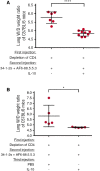TACO and TRALI: biology, risk factors, and prevention strategies
- PMID: 30570487
- PMCID: PMC6324877
- DOI: 10.1182/asheducation-2018.1.585
TACO and TRALI: biology, risk factors, and prevention strategies
Abstract
Transfusion-related acute lung injury (TRALI) and transfusion-associated circulatory overload (TACO) are the leading causes of transfusion-related morbidity and mortality. These adverse events are characterized by acute pulmonary edema within 6 hours of a blood transfusion and have historically been difficult to study due to underrecognition and nonspecific diagnostic criteria. However, in the past decade, in vivo models and clinical studies utilizing active surveillance have advanced our understanding of their epidemiology and pathogenesis. With the adoption of mitigation strategies and patient blood management, the incidence of TRALI and TACO has decreased. Continued research to prevent and treat these severe cardiopulmonary events is focused on both the blood component and the transfusion recipient.
© 2018 by The American Society of Hematology. All rights reserved.
Conflict of interest statement
Conflict-of-interest: N.R. has declared no competing financial interests.
Figures



